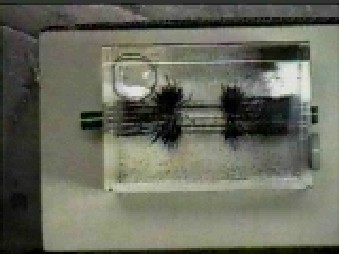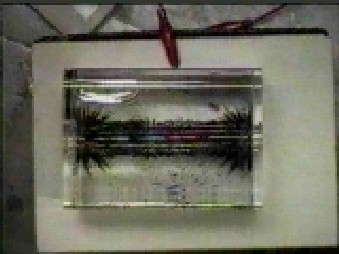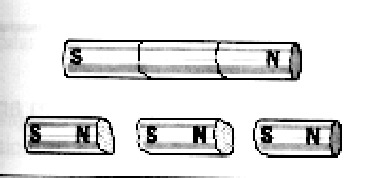



All materials are made up of atoms, which can behave like little magnets. If these magnets are permanently aligned, we obtain a net magnetic field, and therefore the entire material is a natural, usable, permanent magnet. In some materials, the little magnets are very weak (for example, aluminum, plastic, or copper). Thus these types of metals have no net magnetic properties, and therefore are not attracted or repelled by other magnets. In other types of materials (for example- steel bolt) the mini-magnets are not fixed and can therefore be aligned. For example, if the North pole of a permanent magnet is near this metal, the North poles of these mini-magnets will be pushed away and the South will be attracted. This causes the metal to be attracted to the magnet. The same is true for the case where the South pole of a permanent magnet is near this metal. The opposite occurs and the metal will still be attracted.
Why do the steel filings form lines around the magnet?
When a metal is attracted to a magnet, it becomes a magnet with north and south poles. Another metal can be attracted and become a magnet, aligning north to south. This continues until all the metals are lining up north to south. The strength of the field decreases as you move away from the permanent magnet.
What happens when you split a magnet in two?
Because the metal consists of many mini-magnets lined up North to South with a net magnetic North on one end and a net magnetic South on the other end, breaking a large magnet in pieces creates smaller magnets with a net magnetic North and South at either end.

How do you demagnetize something?
By dropping it or placing it in a stronger opposing magnetic field, the mini-magnets become misaligned, producing no net magnetic field. To fix a metal that has been demagnetized, place it in the field of a strong magnet to realign the mini-magnets.
To Main Page